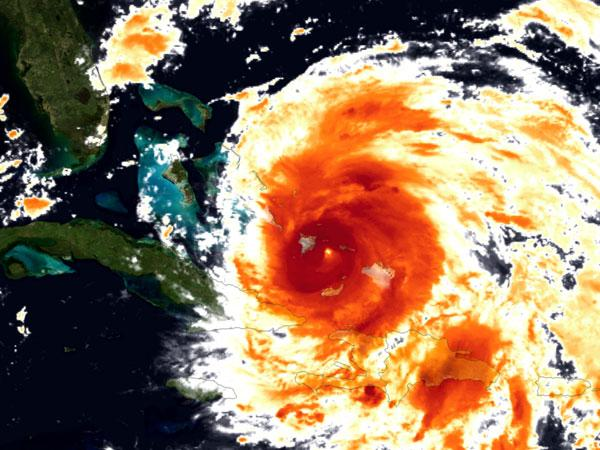 Preparing for Hurricane Irene is fundamentally important for residents and tourists on the Eastern seaboard this weekend. Even though natural disasters illuminate the grave and inherent public safety deficiencies in most American cities, this fact shouldn’t discourage people taking the proper precautions to insure their safety and the safety of others, which may mitigate the unnecessary suffering that we all witnessed in post-Katrina New Orleans.
Preparing for Hurricane Irene is fundamentally important for residents and tourists on the Eastern seaboard this weekend. Even though natural disasters illuminate the grave and inherent public safety deficiencies in most American cities, this fact shouldn’t discourage people taking the proper precautions to insure their safety and the safety of others, which may mitigate the unnecessary suffering that we all witnessed in post-Katrina New Orleans.
If the Hurricane hits New York City, in particular, the damage predicted will be a once in a lifetime event, which — with the rapidly increasing pace of climate change — will certainly become a more frequent event if we don’t push our leaders to take nature’s warnings much more seriously.
New York has a poor population of non-drivers comparable to the levels in New Orleans, which made it very difficult for many residents to evacuate. If you know someone without the means to transportation, carpooling will help many residents leave and encourage solidarity and compassion among others to help their fellow citizens.
In any event, here are some basic tips for our East Coast sisters and brothers, courtesy of Eco Razzi and the U.S. Department of Agriculture:
For Humans
- Lighting: Get yourself some candles, matches, batteries and if you don’t have one already, a flashlight. Power outages can cause you to be in the dark for hours, days, or even weeks. No joke.
- Bottled Water: I know. Normally on Ecorazzi we rage against the stuff, but sometimes in a big storm, you can lose access to drinkable water. To be more eco-friendly about it, buy at least gallon sized containers. They produce less garbage than lots of little bottles. Or, you can do what I’m doing. Take all your jugs and fill them up with tap water in advance so you have some good ol’ fashion tap water at the ready.
- Food and Medication: Stock up on foods that don’t need to be refrigerated. My favorite is peanut butter. Crackers, nuts, and canned foods like beans are good options. Anything that doesn’t depend on your refrigerator or need to be cooked. If you’re on any important medications, make sure you have enough to get your through the week.
- Refrigerator: Before the storm, turn your refrigerator to its coldest setting. That way, if the power does go out, your food will last a bit longer. However, if your power does go out, start eating. (Keep the refrigerator door closed as much as possible to keep in the cold.)
- Gutters: If you live in a house, make sure that you’ve cleaned out your gutters. Water is going to be coming down fast and hard so you want your gutter system to be clear to send water away from your foundation to prevent flooding.
- Trees: If you have any dead looking branches or shrubs around your house that look like they might fly off when the wind really starts blowing, trim them now so they don’t damage your home.
- Windows: Stay away from windows during the storm. If you live in an area that is going to get hit really badly, board up your windows.
- Evacuation Plan: If you do need to evacuate, have a plan, and make sure it includes your pet.
Pet Safety
- If you have not been ordered to evacuate, make sure you have enough pet food and water on hand to feed your pets during an emergency.
- If you have been ordered to evacuate by state or local authorities, take your pets with you when you go. If you need assistance, such as persons relying on public transportation or with medical special needs, contact your emergency management agency for instructions.
- To keep your pets safe during the evacuation, secure them with a collar/harness and leash, or in a pet carrier, to safely transport them. For everyone’s safety, you may also wish to bring a muzzle if your pet doesn’t react well in stressful situations.
- An emergency pet shelter might be available near the human emergency shelter, check with your local emergency management agency to find the nearest emergency pet shelter to you. Do not stay behind with your pet if state or local officials order you to evacuate.
- If a pet shelter is located near a human shelter, pet owners could be allowed to visit and care for their pets during designated times.
- At nearby shelters, pet owners may be allowed to care for and walk their pets during designated times.
- Pet owners should be prepared to provide the following information to pet shelter workers if possible: name; species and breed; sex; color; distinctive markings; age; microchip identification number; vaccination records; health conditions and required medication.
Other useful items to bring to a shelter are:
- a clear and current photo of you with your pet
- an extra collar, leash, and/or harness that fits
- favorite toys
- any medications and special diets for their pets
- information on feeding schedules, medical conditions, behavior problems, and the name and number of your veterinarian in case you have to foster or board your pets
- a pet carrier/kennel large enough for your pet to sleep in comfortably
Additional information and updates about USDA’s hurricane relief efforts are posted at www.usda.gov/disaster. And information about the U.S. Government’s response efforts is available at www.ready.gov.






